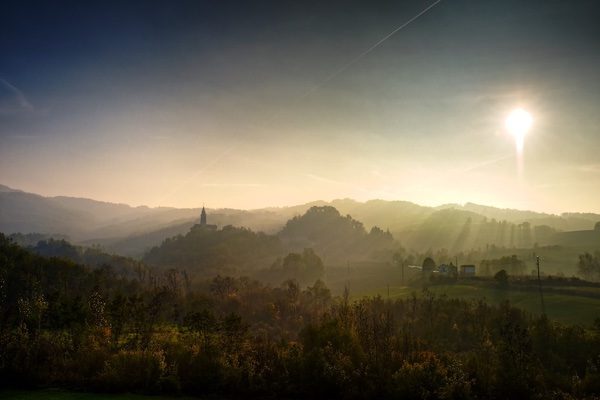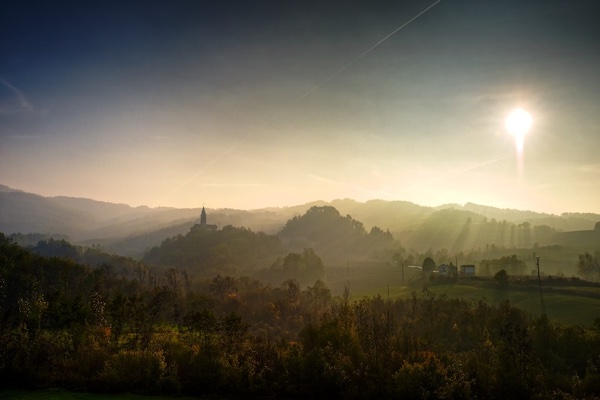I’m allowing myself here a small vent: If there is one thing that makes me mount the beast, is showing my photos to someone for the first time and hearing : “Hey, but you…. Photoshopped them!“
If you want to piss me off, photographically speaking, that is one of the best ways. And I usually would like to respond with a bit of sarcasm: “Really? What an incredible eye you have!“
In place of the sarcasm, I’m offering here the reality behind post-production processing–meaning processing a photo as one would in any traditional film development:
1) Retouching in most cases means simply to add or remove something that was or wasn’t intended to be there, like a huge moon which has nothing to do with the actual subject; to reattach a severed arm caused by awful framing; remove the license plate of a car; eliminate the intrusive uncle from the grandson photo, and so on.
2) Re-balance (or development) is to adjust a photo’s base parameters to achieve the desired colors and atmosphere via an automatic or manual process. For example, saturate reds to intensify a sunset, or increase the contrast of the clouds for greater dimensionality.
3) There are no digital photos whose colors have not been modified by some automatic process. I’m sure the purists of the “My shot is as it is, the JPG as if it were a negative” (and I swear, I’ve heard this many times) will already be reading this with an air of superiority, thinking “Ahhhh! I do not retouch anything.”
This is bullshit. And for two main reasons. First: They have no idea of how to use a digital darkroom (Apple Aperture, Capture One, Lightroom, and so on). Second: their dear cameras, whether or not SLR, apply filters to JPGs automatically. What do you think the automatic mode (or the Programmed or P mode) actually is? Nothing more than automatic digital filters!
And they are filters that work something like this: The camera automatically recognizes the composition of the scene (such as a landscape or a portrait) and, according to an archive of standards programmed into its memory, applies the most appropriate filter and color profile, transforming the raw original data into a final image, before compressing it into a JPG. For better or for worse, the whole process is then over. Even the negative has been burned! This process might be very useful to reporters who quickly may need to post their photos, but too rough for my personal taste.
If you want to create photos that most closely resemble a digital negative, you must learn how to manage the raw image format. In a raw photo, all original image data is preserved, unaltered by your camera’s electronic brain.

It would be superfluous to examine such an image on the small screen of the camera, because even then a JPG has already been “filtered” and worked. The viewer is better utilized to examine the basics of a photo, such as framing, exposure and maybe sharpness, but also in this case, with some reservation.
Then, once back home, in your little digital darkroom, a photo can be processed precisely as back in the days of the labs and the films : The negative will be developed! And in a way that conveys the feeling you most want to resonate with your viewers.
That said, when shooting in the raw, still apply all the principles which help to differentiate a good photograph from rubbish; to name a few, the exposure, the light, the depth of field, and over all, the composition.
A badly shot photo is bad no matter the processing or the subject. No matter how much retouching or rebalancing, with the most advanced tools that computer science makes available, a bad picture, will remain an ugly picture.
To complete (and end) my vent, no one should dare think that the photographic retouching practice has never existed. There are thousands of historical examples available online, from photographers who appended to every negative detailed instructions for developing, from masking ( Masks? Photoshop works with masks) to whole kits and techniques available for sale since 1946 as mentioned at this link.
Photography (drawing with light) like every art form, is an expression of the artist himself, not a cold representation of the reality. When you look at a painting, I doubt that the first thing that comes to mind is: “Hey, Van Gogh revised those same traits 200 times, anyone can do it.”


 Scrolling the cursor left and right, you can see how I made colors and details pop, without altering the basic components of the picture. Everything from the original image is preserved, only sharpened or saturated in the final version.
Scrolling the cursor left and right, you can see how I made colors and details pop, without altering the basic components of the picture. Everything from the original image is preserved, only sharpened or saturated in the final version.
Thank you for spurring me on to venture into using raw images, and for your explanation of photo editing.